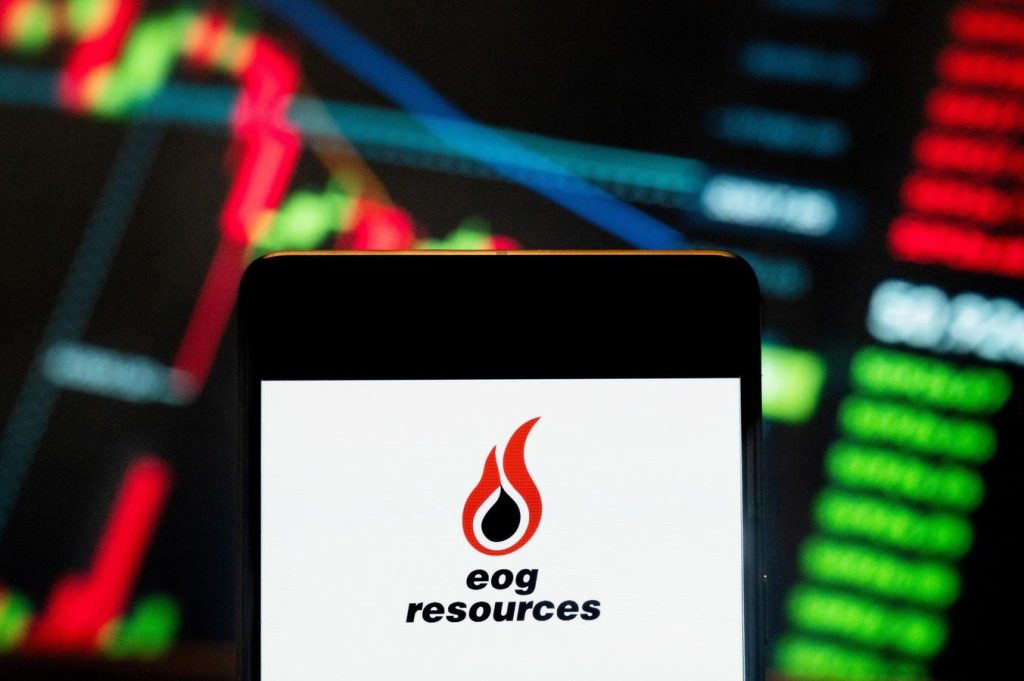EOG Resources (EOG), a major player in the oil and gas sector, has experienced a relatively stagnant stock performance in recent times, mirroring the trends observed in its competitor, Chevron Corporation (CVX). This performance contrasts sharply with the broader market, represented by the S&P 500, which has seen a significant 23% return during the same period. This begs the question: what factors are contributing to EOG’s lackluster performance?
A key aspect of EOG’s business model is its capital-intensive nature, making it highly susceptible to cyclical fluctuations in the market. Recent macroeconomic headwinds and softer earnings have exerted downward pressure on EOG’s stock price. The company’s fortunes are inextricably linked to commodity pricing, leaving it vulnerable to external market forces. Despite anticipated pro-growth policies and a reflationary environment under the current U.S. administration, oil prices have remained stubbornly stagnant. This stagnation is largely attributable to a strengthening U.S. dollar and sustained high levels of domestic oil production, creating a challenging environment for EOG.
Adding to the complexities, EOG is planning to increase its debt load to a projected range of $5 billion to $6 billion within the next 12 to 18 months. This strategic move warrants close scrutiny from investors, especially given the backdrop of rising market interest rates, which could pose a significant financial hurdle for the company. Currently, EOG’s earnings multiple stands at approximately 10x, noticeably below its five-year average of around 13x. This discrepancy suggests a potential undervaluation, although the volatile nature of the energy market makes definitive conclusions difficult.
Despite the near-term challenges, the long-term outlook for EOG appears more promising. The company is expected to benefit from increased production of crude oil and natural gas liquids, particularly from its Delaware basin operations. Furthermore, contributions from the Dorado and Utica projects, as they mature, are anticipated to bolster EOG’s overall production capacity. However, investors seeking a less volatile path to growth might consider diversified portfolios, such as the Trefis High Quality Portfolio, which has historically outperformed the S&P 500, offering a smoother ride with impressive returns.
EOG’s recent third-quarter results offered a mixed bag. While the company beat earnings estimates with a non-GAAP EPS of $2.89, surpassing the consensus of $2.77, revenue came in slightly below expectations at $6 billion, a 4% decline compared to the same period last year. However, the company’s management took proactive steps to mitigate the impact of these somewhat underwhelming top-line results by announcing plans to return capital to shareholders. This initiative includes a 7% dividend increase and a substantial $5 billion expansion of its share buyback authorization. On the production front, EOG demonstrated positive growth, with crude oil production increasing by nearly 8% year-over-year and natural gas liquids production jumping by 10%.
EOG demonstrates a strong commitment to returning cash to shareholders, exceeding its minimum commitment of 70% of annual free cash flow and even surpassing the previous year’s return of 85%. Despite a decline in average crude oil and natural gas prices during the third quarter, the company managed to increase its crude oil and condensate volumes by 3% year-over-year. This underscores EOG’s operational efficiency and ability to navigate challenging market conditions.
Examining EOG’s stock performance over the past three years reveals considerable volatility, with annual returns fluctuating significantly compared to the steadier performance of the S&P 500. The company’s stock soared by 89% in 2021, followed by a 57% gain in 2022, but experienced a -2% decline in 2023. This volatility underscores the inherent risks associated with investing in individual stocks within the energy sector. In contrast, diversified portfolios like the Trefis High Quality Portfolio, comprising 30 stocks, have demonstrated consistently lower volatility and superior performance compared to the benchmark index over the same period. This highlights the potential benefits of diversification in mitigating risk and achieving more stable returns.
Looking ahead, projections for EOG’s financial performance in fiscal year 2024 appear optimistic. Revenues are forecast to reach $19.5 billion, representing a 12% year-over-year increase, while EPS is estimated to come in at $11.49. Based on these projections and an anticipated P/E multiple of 11.8x, EOG’s valuation is estimated at approximately $135 per share, a significant 14% premium over its current market price (as of December 19th). This suggests potential upside for investors, although the inherent uncertainties of the oil and gas market should be taken into consideration. Furthermore, comparing EOG’s performance metrics with its peers provides valuable context for assessing its relative strengths and weaknesses within the industry. This comparative analysis can inform investment decisions and provide a more comprehensive understanding of EOG’s position within the competitive landscape.

